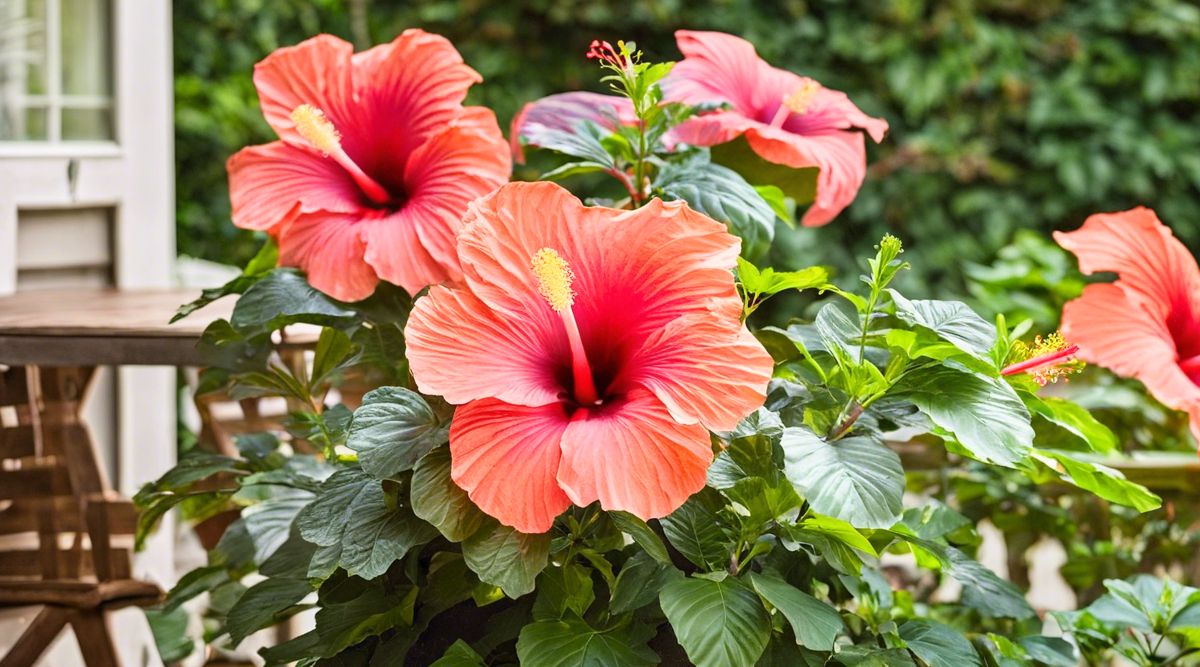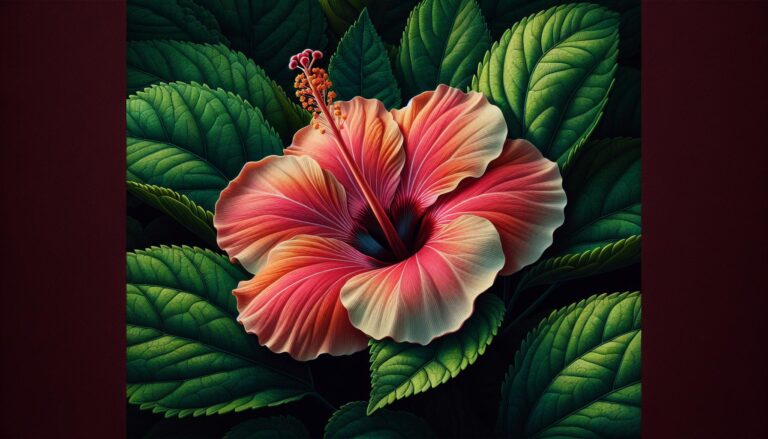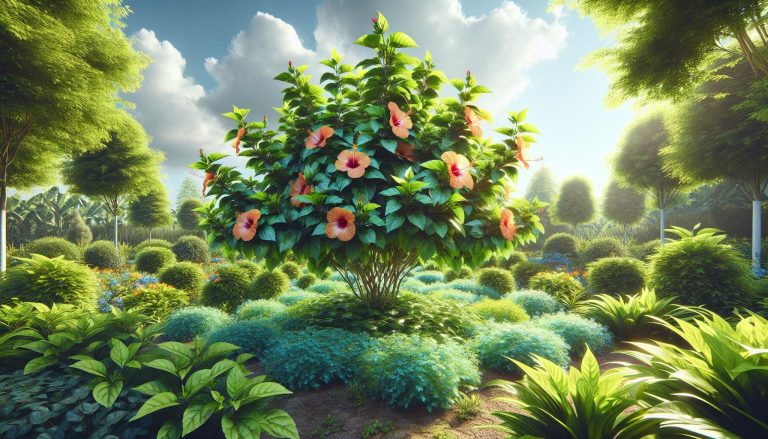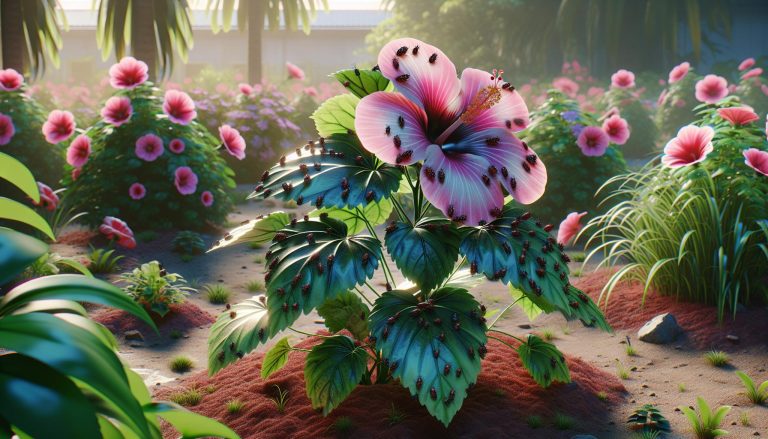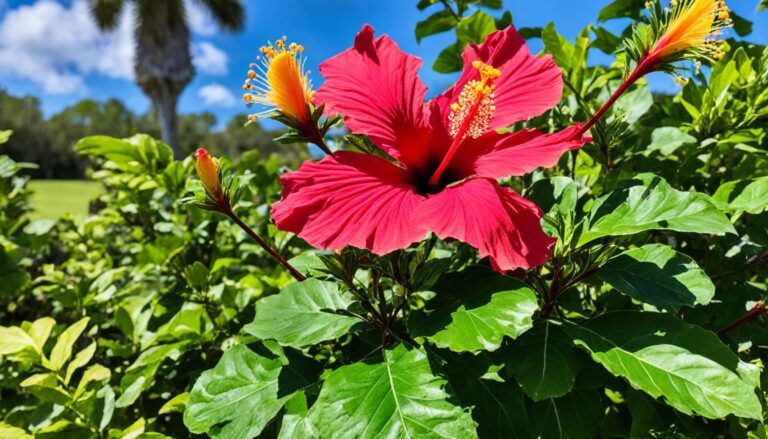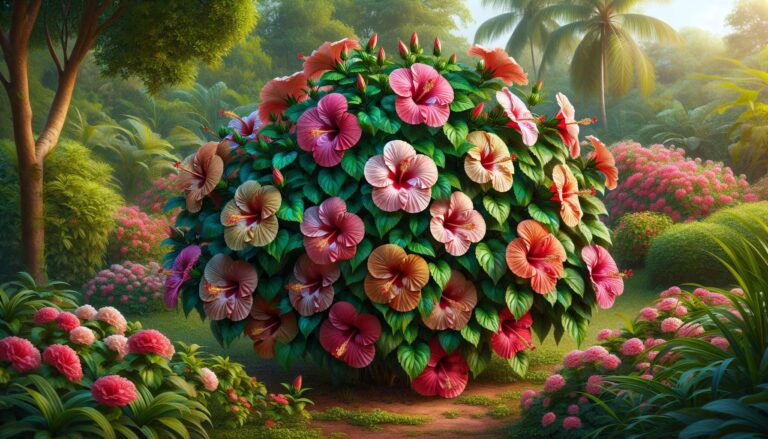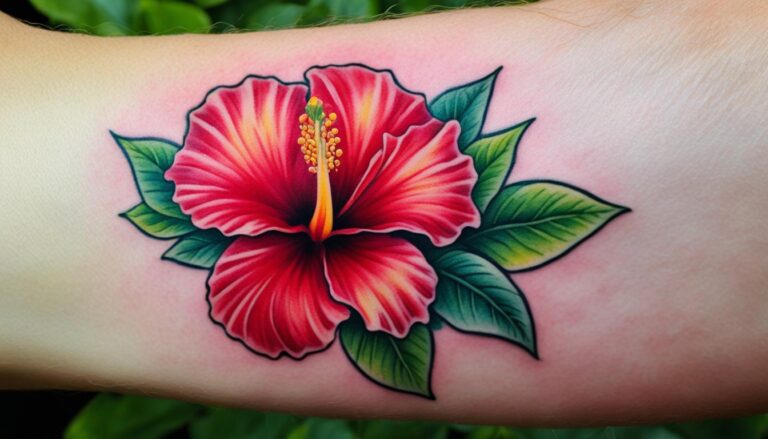Growing Hibiscus in Containers – A Comprehensive Guide
As a passionate gardener with seven years of experience and a particular love for hibiscus, I’m excited to share my knowledge about growing these stunning tropical beauties in containers.
Over the years, I’ve cultivated many types of hibiscus in my garden, and I’ve learned that with the right care, these plants can thrive in pots, bringing a touch of exotic beauty to any space.
Choosing the Right Pot for Hibiscus
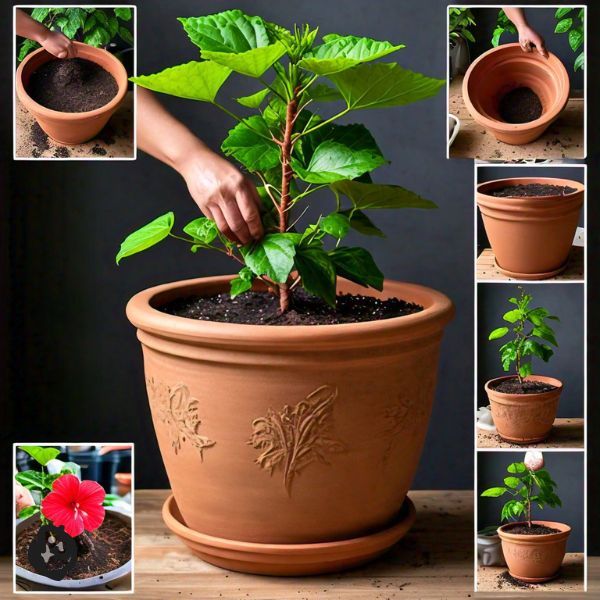
Selecting the appropriate container is crucial for the health and growth of your hibiscus plant. Here’s what you need to know:
- Size matters: Hibiscus plants have extensive root systems and require a large pot to support their growth. Aim for a container that’s at least 60 cm (24 inches) in diameter.
- Drainage is key: Ensure your chosen pot has adequate drainage holes to prevent waterlogging, which can lead to root rot. This is especially important for hibiscus, as they’re sensitive to overwatering.
- Material options: You have several choices when it comes to pot materials:
- Terracotta: Provides good air circulation but can dry out quickly
- Ceramic: Attractive and retains moisture well
- Plastic: Lightweight and affordable
💡 Pro tip: Avoid placing a saucer under the pot, as this can impede drainage and create problems for your hibiscus.
Selecting the Ideal Potting Mix

The right potting mix is essential for the health of your containerized hibiscus. Here’s what to look for:
- Well-draining mix: Choose a high-quality potting mix specifically formulated for flowering plants or containers. This ensures proper drainage and aeration.
- Key ingredients: Look for a mix containing:
- Coco coir or peat moss (for moisture retention)
- Composted bark (for structure and nutrients)
- Sand or perlite (for improved drainage)
- Avoid garden soil: Regular garden soil can become compacted in pots, leading to poor aeration and drainage.
- Boost with organics: Consider adding organic materials like worm castings or compost to support beneficial microbes and provide additional nutrients.
In my experience, a custom mix of 2 parts quality potting soil, 1 part perlite, and 1 part compost has worked wonders for my potted hibiscus plants.
Planting and Transplanting Hibiscus
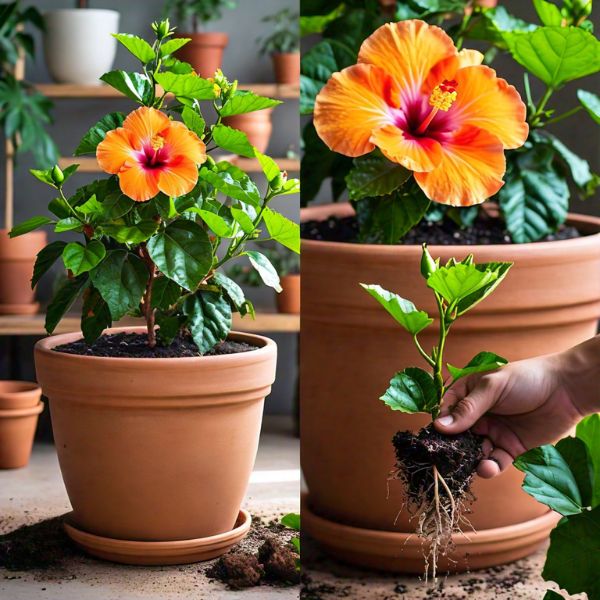
Whether you’re planting a new hibiscus or transplanting an established one, follow these steps for success:
For new plants:
- Place a layer of potting mix in the bottom of the pot.
- Gently remove the hibiscus from its nursery container.
- Position the plant in the new pot, ensuring the base of the stem is level with the top of the container.
- Backfill with potting mix, firming gently around the roots.
For transplanting:
- Choose a pot 1-2 inches larger in diameter than the current container.
- Carefully remove the hibiscus from its old pot.
- Loosen any compacted roots gently.
- Replant in the new container with fresh potting mix.
🌺 Personal experience: I’ve found that transplanting hibiscus in the early spring, just as new growth begins, yields the best results. This gives the plant a full growing season to establish itself in its new home.
Sunlight and Temperature Requirements
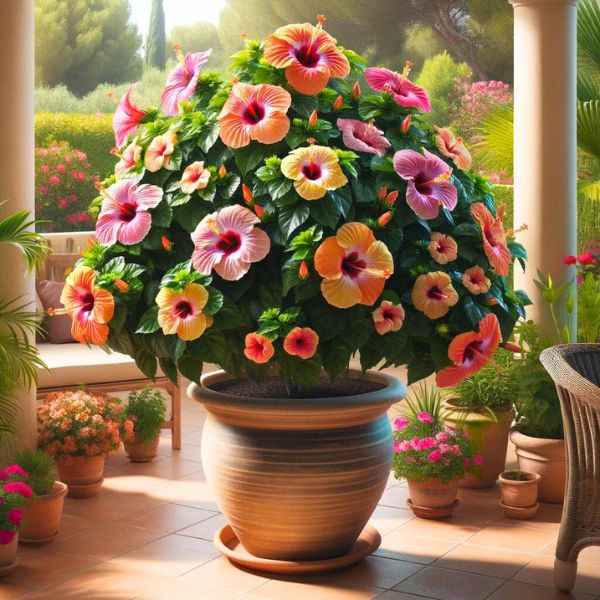
Hibiscus plants are sun-lovers, but they also appreciate some protection in extremely hot climates. Here’s what you need to know:
- Sunlight needs: Aim for 6-8 hours of direct sunlight daily. In my garden, I’ve noticed that hibiscus plants receiving morning sun and afternoon shade tend to produce the most vibrant blooms.
- Temperature preferences:
- Ideal range: 18-30°C (65-85°F)
- Minimum temperature: 10°C (50°F)
- Maximum temperature: 35°C (95°F)
- Winter protection: If you live in a colder climate, be prepared to move your potted hibiscus indoors or provide insulation during winter months. I use a combination of frost cloth and moving plants to a sheltered area to protect my hibiscus during chilly Florida winters.
Watering and Feeding Hibiscus
Proper watering and fertilization are crucial for healthy, blooming hibiscus plants. Here’s my tried-and-true approach:
Watering:
- Frequency: Water when the top 2-5 cm (1-2 inches) of soil becomes dry.
- Technique: Water thoroughly until excess drains from the bottom of the pot.
- Consistency: Aim to keep the soil moist but not waterlogged.
Feeding:
- Type of fertilizer: Use a balanced, water-soluble fertilizer or a slow-release granular fertilizer.
- Frequency: Fertilize every 6-8 weeks during the growing season.
- Winter care: Reduce fertilizer application in winter when growth slows.
🌿 Tip from my garden: I’ve had great success using a 20-20-20 water-soluble fertilizer diluted to half strength and applied every other week during the peak growing season.
Learn more about keeping your hibiscus blooming
Pruning and Maintenance
Regular pruning and maintenance will keep your containerized hibiscus healthy and looking its best. Here’s what I do:
Pruning:
- Timing: Prune in early spring to encourage new growth.
- Technique:
- Remove dead, damaged, or crossing branches.
- Trim back the plant by about one-third to promote a bushy habit.
- Make clean cuts just above a leaf node.
Pest Management:
- Common pests: Watch for mealybugs, aphids, and spider mites.
- Treatment: Use insecticidal soap or neem oil for organic pest control.
- Prevention: Regularly inspect plants and maintain good air circulation.
Repotting:
- Frequency: Repot every 2-3 years or when the plant becomes root-bound.
- Signs it’s time to repot:
- Roots growing out of drainage holes
- Water draining too quickly
- Slowed growth or reduced flowering
Discover more about hibiscus plant care
Troubleshooting Common Issues
Even with the best care, hibiscus plants can sometimes face challenges. Here are some common issues and how to address them:
| Problem | Possible Cause | Solution |
|---|---|---|
| Yellowing leaves | Overwatering or nutrient deficiency | Adjust watering schedule; check drainage; apply balanced fertilizer |
| Dropping buds | Temperature stress or inconsistent watering | Maintain stable temperatures; water consistently |
| Lack of blooms | Insufficient light or improper fertilization | Ensure adequate sunlight; use a bloom-boosting fertilizer |
| Wilting | Underwatering or root rot | Check soil moisture; ensure proper drainage |
Learn more about yellowing hibiscus leaves
Seasonal Care Tips

Caring for your containerized hibiscus throughout the year requires some adjustments based on the seasons:
Spring:
- Prune to shape and encourage new growth
- Resume regular fertilization schedule
- Gradually increase watering as temperatures rise
Summer:
- Monitor closely for signs of heat stress
- Water more frequently, especially on hot days
- Provide afternoon shade if necessary
Fall:
- Reduce fertilization as growth slows
- Begin to decrease watering frequency
- Prepare for winter protection if needed
Winter:
- Move containers to a protected area or indoors if temperatures drop below 10°C (50°F)
- Water sparingly, only when the soil is dry
- Hold off on fertilization until spring
Enjoying Your Hibiscus
Growing hibiscus in containers allows you to enjoy these tropical beauties even with limited space.
Here are some ways to make the most of your potted hibiscus:
- Create a tropical oasis: Group several hibiscus containers with other tropical plants for a lush, exotic feel.
- Use as focal points: Place large containers of hibiscus as striking focal points in your garden or on a patio.
- Experiment with colors: Try different hibiscus varieties to create stunning color combinations.
- Harvest flowers: Use hibiscus flowers in teas, cocktails, or as edible garnishes.
Explore more about edible hibiscus flowers
Growing hibiscus in containers has been a rewarding experience for me, allowing me to enjoy these stunning plants in various settings around my garden.
With proper care and attention to their unique needs, you too can successfully cultivate these tropical beauties in pots, bringing a touch of the exotic to your outdoor space.
Remember, every plant is unique, and part of the joy of gardening is learning to understand and respond to your plant’s individual needs. Happy gardening, and may your hibiscus thrive!

